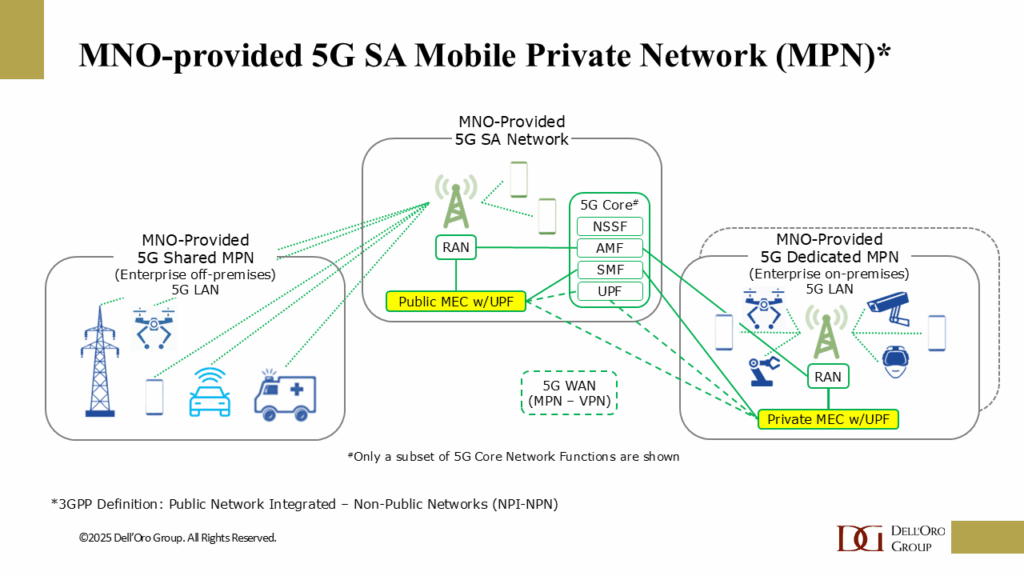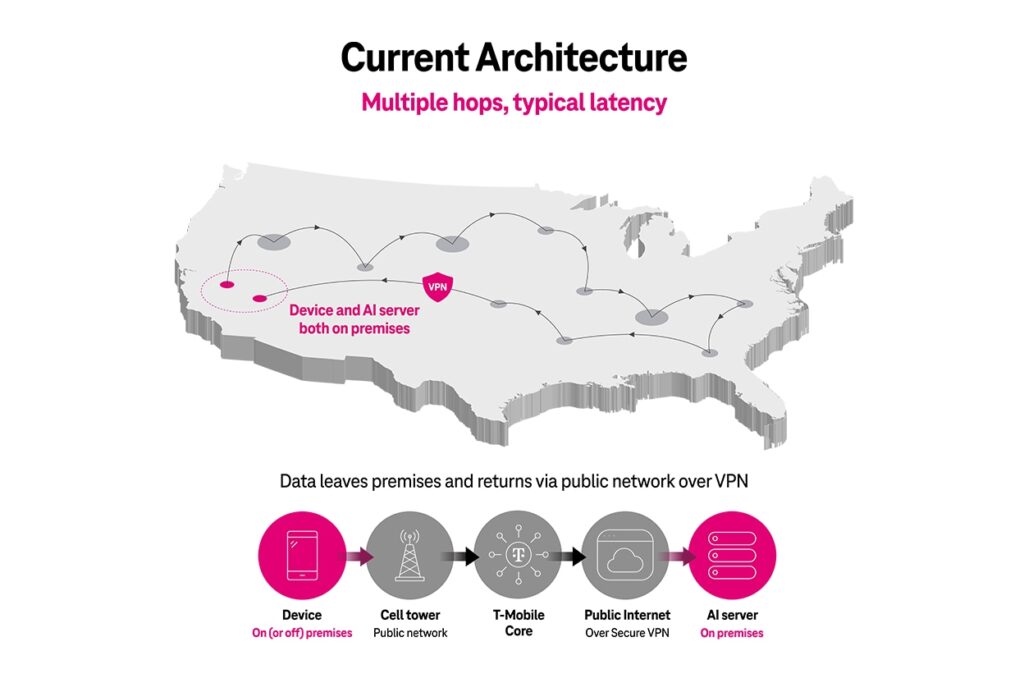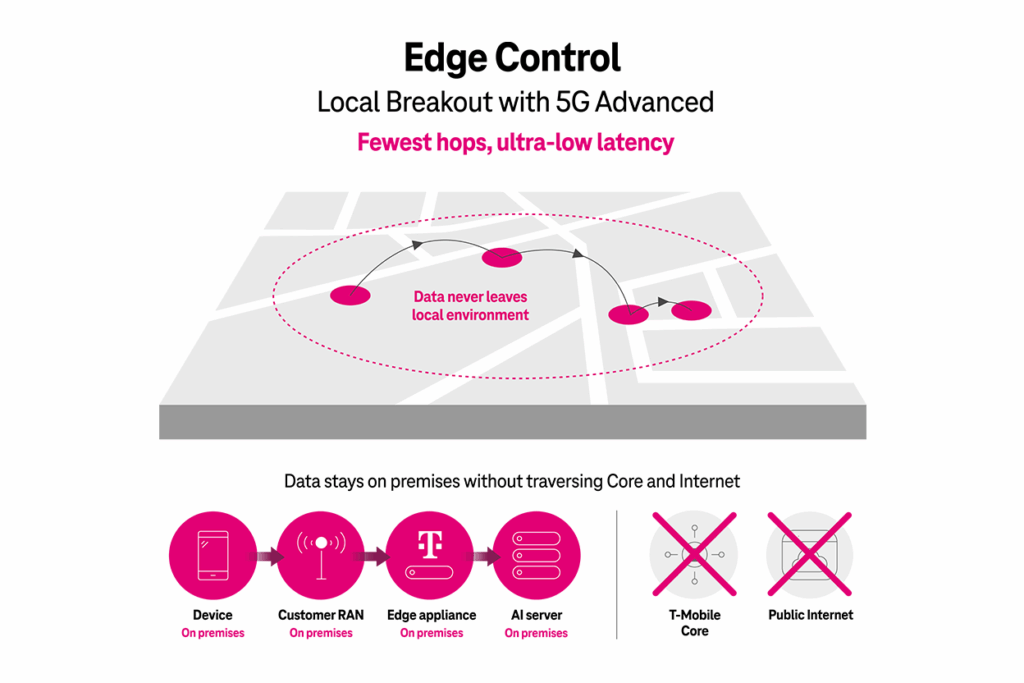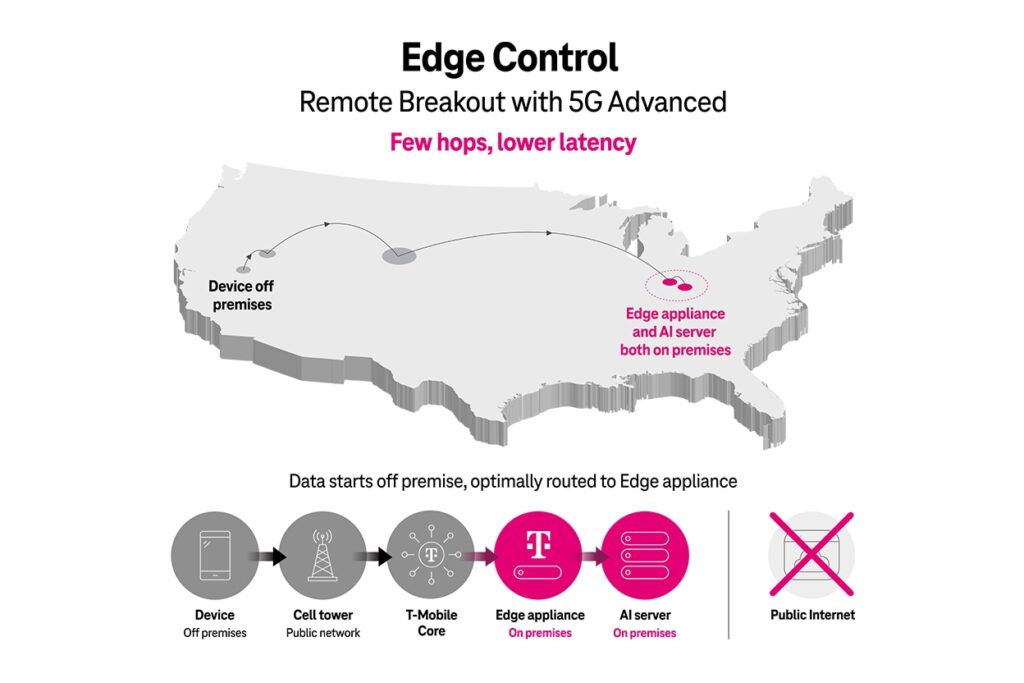T-Mobile is upping its enterprise game with a new private-like 5G connectivity play. The US carrier, long chasing AT&T and Verizon in the business market, has launched a pseudo-private 5G service, Edge Control, that leverages its advanced 5G infrastructure to deliver private network performance with less cost or complexity.
In sum – what to know:
Edge control – “private network-like performance minus the overhead”, promises T-Mobile US.
Public smarts – the service is built on its 5G Advanced network, wrapping in slicing and MEC.
China model – it follows the successful China blueprint for hybrid MNO-led private 5G.
Maybe there’s method in the madness; well, of course there is. T-Mobile – a consumer brand in the US telecoms market, playing catch-up with AT&T and Verizon in the enterprise space – looks increasingly like it is in possession of a well-crafted connectivity proposition for US businesses, which makes differentiated use of its more-advanced 5G infrastructure and more-bountiful 5G spectrum holdings.
Following its withdrawal from third-party neutral-host systems in CBRS spectrum, in a bid to put more in-building traffic onto its own systems, plus its parallel launch of public network slicing (bundled with security and satellite comms) and tactical vote-pulling inauguration of a new ‘cyber defense centre’, the company has now introduced a pseudo-virtual private 5G offer for US enterprises – of the sort that has underpinned the market in China.
The new proposition, called Edge Control, offers “private network-like performance minus the overhead”, said T-Mobile. It is better than enterprise Wi-Fi, it said, and simpler and cheaper than proper private 5G, as mostly deployed outside of China. In other words, the control plane remains attached to T-Mobile’s public core network – “on [its] property at a regional data centre”, as Dell’Oro Group explained in a helpful research note.
The core-network user plane function (UPF) – handling signaling, management, and control tasks – sits in multi-access edge computing (MEC) nodes, meanwhile, “distributed across enterprise campuses”, according to Dell’Oro Group. The sense is these will be “geographically dispersed”, too, in line with the traditional telco MEC proposition. Point is it is a hybrid private 5G set-up, which leans heavily on T-Mobile’s public 5G network.
“We would call it an MNO-provided private network,” said Dave Bolan, research director at Dell’Oro Group, also making the China comparison, and offering an illustrative slide alongside (see below). “Chinese MNOs have been using a similar network architecture since launching their 5G SA networks in 2020. By the end of 2024, MNOs in China had implemented 55,000 MNO-provided private networks. Based on their success in China, we expect T-Mobile will achieve proportional success in the US market.”

But T-Mobile is rolling out 5G Advanced in the US (“America’s only 5G Advanced network”), a micro-generation upgrade on 5G Standalone (SA), still being deployed by its rivals. It is using slicing to prioritise enterprise traffic and localized cell sites to somehow direct connectivity across “smaller hops” to slash latency, versus just public or public-sliced 5G, and capital investment and operational costs versus enterprise-housed and -controlled private 5G (see images from T-Mobile below).
In parallel, T-Mobile has launched a management (“visibility and control”) enterprise platform, called T-Platform – “because managing your network shouldn’t be a scavenger hunt”, it said. T-Platform is presented as a “5G portfolio platform” to cover the gamut of enterprise device and connectivity management, including for IoT fleet devices inside and outside of enterprise premises. T-Platform provides “unified management” of its business services, it said.
US advisory services outfit J. Gold Associates called the new Edge Control proposition a “pseudo private network” in a research note. T-Mobile said the US golf association, PGA of America, and the Las Vegas leg of the Formula One grand prix (Heineken Las Vegas Grand Prix) series have already signed up, apparently – or are variously “exploring [its]… capabilities”, anyway. So too has the US military, a major private 5G user, in some form.
It is pitching directly to the private 5G market – specifically to factories, ports, warehouses, cities. But entertainment venues, as above, and healthcare facilities appear to be particular targets. “AI is reshaping how doctors and nurses deliver care,” it said in a press note, listing patient monitoring, predictive analytics, and faster diagnostics as use cases, and quoting a stat that 71 percent of hospitals use predictive AI in health records, up five percent on 2023.
Making reference to the broader excitement around enterprise AI, and the attendant need for “real-time” data and “mission-critical” delivery of it, T-Mobile presented its hybrid 5G proposition as a middle-ground between unreliable Wi-Fi and expensive private cellular. “Traditional connectivity solutions like Wi-Fi can struggle to keep pace – often leading to reliability issues, patchy coverage, and growing concerns around data sovereignty,” it stated.
“And while private networks can help organizations overcome latency, security and data jurisdiction challenges, realizing these benefits at scale demands higher costs and complex orchestration across multiple sites. Organizations get the benefits of a private network – minus the overhead of deploying and managing one at every location.”
The company implied mobile operators have a duty-of-care to push boundaries, and make connectivity simpler and better for enterprises at the same time. Mo Katibeh, chief marketing officer for its business group, said: “Networks should accelerate ambition, not hold it back… We’re giving businesses tools to work faster, safer and smarter – while making network management as simple as it should be. This is what the future of connectivity looks like.”
T-Mobile explained the architecture as follows, and provided a couple of diagrams, as below: “Edge Control enables seamless data routing between endpoints, servers and compute – delivering ultra-low latency, data sovereignty, and simplified scalability. [It] enables organizations to process data directly within their existing infrastructure for ultra-low latency – whether on private cloud platforms or on-premises systems like those from Dell Technologies.”


It went on: “This flexibility allows customers to operate Edge Control in environments tailored to their unique operational, compliance and performance needs while processing data closer to where it’s generated. And because [it] is built on 5G Advanced, it offers an industry-first advantage – traffic is routed precisely where an organization wants it to go with fewer ‘hops’, even if users are across the country.
“This means faster data delivery, avoiding the delays of traditional VPN tunnels. Even remote users and endpoints maintain low-latency performance and meet data sovereignty requirements through optimized intra-network routing. Instead of detouring traffic through multiple checkpoints, Edge Control creates a secure local ‘on/off ramp’ that gives data a direct, efficient path.”

In its research note, J. Gold Associates commented: “[This solution] provides the ability… to implement private 5G without having to build out technology or manage another complex network within their organization. It also offers near instantaneous network creation and deployment once companies have decided that a 5G private network would be advantageous to their operations. This eliminates what normally would be a three-to-six month process, or longer.
“It offers most of the benefits of a full private 5G implementation for a fraction of the cost and minimal effort. Creating a virtual 5G private network service is a major step towards enabling a more secure, functional, and resilient corporate network… while also moving the potentially large cap-ex cost of a private 5G. T-Mobile is expanding the market availability of private 5G and making it available for many companies that otherwise may not find it attractive.”
It added: “We expect many organizations to move in this direction.”

